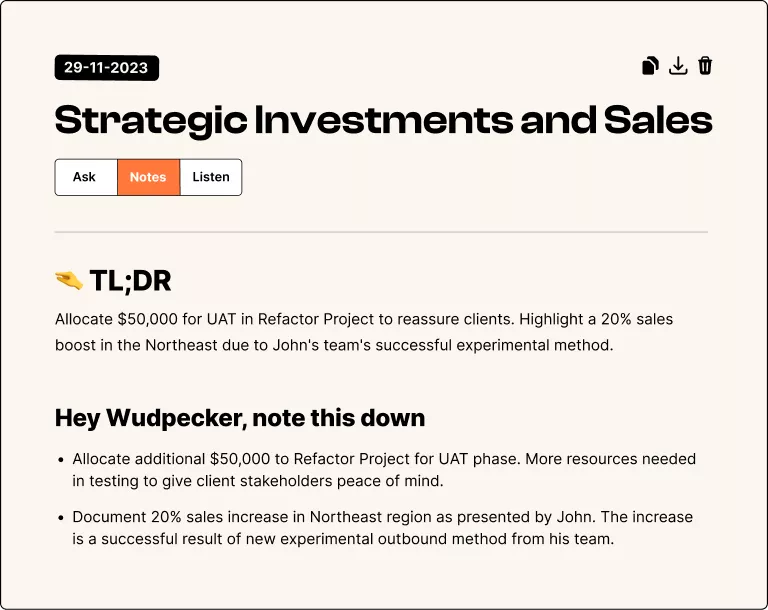Product analytics helps you spot customers at risk of leaving early. By monitoring key metrics like usage drops, feature adoption, and time-to-value, you can act fast to reduce churn. Here's a quick breakdown of how to identify and address these risks:
- Usage Decline: Track active users, session duration, and feature interaction to catch early signs of disengagement.
- Low Feature Usage: Identify underused features and gaps in team-wide adoption.
- Health Scores: Combine metrics like product usage, engagement, and support interactions for a single risk indicator.
- Customer Feedback: Analyze surveys, support tickets, and comments to understand dissatisfaction.
- Time-to-Value Delays: Monitor how quickly customers see benefits from your product.
Platforms like Userlens provide dashboards and alerts to simplify this process, helping you act before customers churn. By focusing on these five areas, you can proactively retain more customers and improve their experience.
Prevent Churn by Monitoring Account Health in Real-Time ...
1. Drop in Usage
Product analytics can spot potential churn by analyzing usage patterns. A noticeable decline in how often a product is used often signals a risk. By monitoring daily, weekly, or monthly engagement, businesses can quickly identify accounts that stray from their usual activity levels.
Here are some key metrics to track:
- Active Users: The number of unique users logging in.
- Session Duration: How much time users spend in the product.
- Feature Interaction: Engagement with key features.
- Time Between Sessions: The gaps between user logins.
Activity heatmaps offer a quick snapshot of user engagement, making it easy to see which features are being used most frequently. Tools like Userlens include pre-built dashboards that can highlight sudden drops in engagement.
Acting quickly can help prevent churn. By setting a baseline for each customer's typical behavior, teams can create alerts for any significant changes. This lets customer success managers step in early to address problems. Pairing this data with feature adoption insights can show both the decline in usage and its underlying causes.
2. Low Feature Usage
Understanding how customers engage with your product's features can reveal a lot about their overall satisfaction. If users rarely use key features, it could mean they’re not getting the most out of your solution. By tracking feature usage, you can identify where adoption is falling short.
Key Metrics to Watch:
- Feature discovery rates: How often users find and try new features.
- Time spent per feature: How much time users dedicate to specific features.
- Feature abandonment: Features that users try but stop using.
- Usage frequency per team member: How often individual team members engage with features.
Tools like activity heatmaps can visually highlight which features are being used and which are ignored. For example, Userlens' activity dots show feature usage across teams, making it easier to spot departments struggling with certain functionalities.
Red Flags to Watch For:
- Skipped onboarding steps
- Minimal use of advanced features
- Inconsistent engagement across teams
- Over-reliance on basic features
It’s important to set benchmarks for different customer segments. For instance, enterprise clients might need team-wide adoption of multiple features, while smaller businesses may focus on mastering a few core tools. Dashboards can then flag accounts that fall below these benchmarks.
sbb-itb-6285ddb
3. Health Score Tracking
Health scores provide a single metric that combines various data points to assess customer engagement. They help predict customer behavior and highlight potential churn risks early.
Key Elements of a Health Score
Health scores are built using several important indicators:
- Product Usage: Metrics like daily active users, session lengths, and how often key features are used.
- User Engagement: Login patterns, time between sessions, and how frequently users interact.
- Business Metrics: Details such as contract size, team size, and how long the account has been active.
- Support Interactions: Data on ticket numbers, resolution times, and customer satisfaction levels.
Establishing Health Score Thresholds
To set thresholds, identify patterns that separate thriving customers from those at risk. Tools like Userlens' activity dots provide visual insights into product usage across teams, making it easier to spot adoption issues within specific departments. These thresholds act as an early warning system for potential problems.
Early Warning Signs to Watch
Once thresholds are in place, keep an eye on these signs of declining customer health:
- A steady drop in usage
- Gaps in product adoption across different teams
- Lower use of essential features compared to benchmarks
- Irregular engagement or long periods of inactivity
Adjusting Scores Dynamically
Use a weighted scoring system that prioritizes recent activities and critical features. Adjust scores based on industry standards to ensure they remain accurate and relevant.
4. Customer Feedback Signals
Customer feedback provides deeper insight into potential risks, complementing usage trends and health scores.
By analyzing feedback alongside behavior, you can spot early signs of churn and gain a fuller understanding of customer engagement.
Voice and Behavior Combined
Feedback and usage data together reveal both what customers do and how they feel. Key sources to monitor include:
- Support tickets and resolution times
- Survey results and satisfaction ratings
- Transcripts from customer calls
- Open-ended feedback submissions
Warning Signs to Watch
Certain feedback patterns can indicate churn risks. Pay attention to:
- Multiple support tickets about the same issue
- Satisfaction scores that drop over time
- Negative tone in feedback comments
- Delayed responses to customer inquiries
- Low engagement with customer success efforts
Turning Feedback Into Action
To use feedback effectively for reducing churn:
- Set Baselines: Identify typical feedback trends for loyal customers versus those who churned in the past.
- Create Alerts: Set triggers for concerning patterns, like repeated support issues combined with lower feature usage.
- Route Feedback Automatically: Ensure critical feedback reaches the right team members quickly.
Best Practices for Feedback Analysis
Combine automated tools with manual reviews to get the most out of feedback:
- Centralize feedback from all channels in one platform
- Categorize and tag feedback for trend tracking
- Compare feedback with behavior and usage data
- Track how quickly issues are resolved and how satisfied customers are
- Document recurring issues to address them systematically
"Understand your customers from what they say and what they do" – Userlens by Wudpecker
This approach to feedback analysis helps you address issues early and prevent churn.
5. Measuring the Speed of Value Achievement
How quickly customers start seeing benefits from your product offers valuable insight into their overall health. Delays in achieving value can point to issues like implementation hurdles or mismatched expectations, both of which increase the risk of customer churn.
Key Time-to-Value Metrics
Here are some milestones to monitor for spotting accounts that might be at risk:
- Initial Setup: The time it takes from purchase to first active use of the product.
- Core Feature Adoption: How long it takes for customers to regularly use key features.
- Integration Completion: The time required to fully integrate the product with existing systems.
- ROI Achievement: The period until customers begin to see measurable benefits or returns.
Signs Customers Are Struggling
Certain patterns can signal that customers are having trouble realizing value:
- Onboarding takes longer than standard industry timelines.
- Key features are still not fully adopted after 30 days.
- There’s a noticeable gap between training sessions and actual product usage.
- Milestones are reached much later than they are for other successful customers.
Ways to Speed Up Value Achievement
You can help customers achieve value faster by:
- Setting clear milestones with defined timelines.
- Monitoring progress toward those milestones.
- Automating alerts for delays or missed deadlines.
- Offering targeted support when customers fall behind.
Success Velocity Framework
This framework helps predict outcomes by breaking down value stages, timelines, and potential risks:
| Value Stage | Expected Timeline | Risk Indicators |
|---|---|---|
| Basic Setup | 1–2 days | If setup isn’t complete after 1 week |
| Core Features | 2 weeks | Less than 50% adoption after 1 month |
| Advanced Features | 1 month | No additional usage after 3 months |
| Full Integration | 2 months | Delays in integration beyond 3 months |
Steps for Proactive Intervention
When customers are slow to achieve value, consider these actions:
- Schedule check-ins at key milestones to stay updated on progress.
- Offer extra training for specific features they’re struggling with.
- Share tips and success stories from other customers who’ve implemented the product effectively.
- Adjust metrics and timelines to better suit the customer’s unique situation.
Conclusion
Product analytics helps businesses spot and address churn risks early. By monitoring usage declines, feature adoption rates, health scores, customer feedback, and time-to-value metrics, companies can act before issues escalate - creating an effective early warning system.
This approach turns data into action. Usage trends highlight potential problems long before churn occurs. Health scores provide a clear way to assess accounts, while feedback and value metrics add depth to the analysis. Together, these insights make it easier to identify risks and respond quickly.
Platforms like Userlens make this process easier. With features like activity heatmaps and pre-built dashboards, teams can uncover usage patterns and feature adoption trends across their customer base. This gives customer success teams the tools they need to take focused action and prevent churn.
To make it work, companies need to:
- Keep a close watch on key indicators
- Respond quickly - ideally within days
- Track the results of their interventions to refine their approach
Related posts



.svg)



















.svg)
